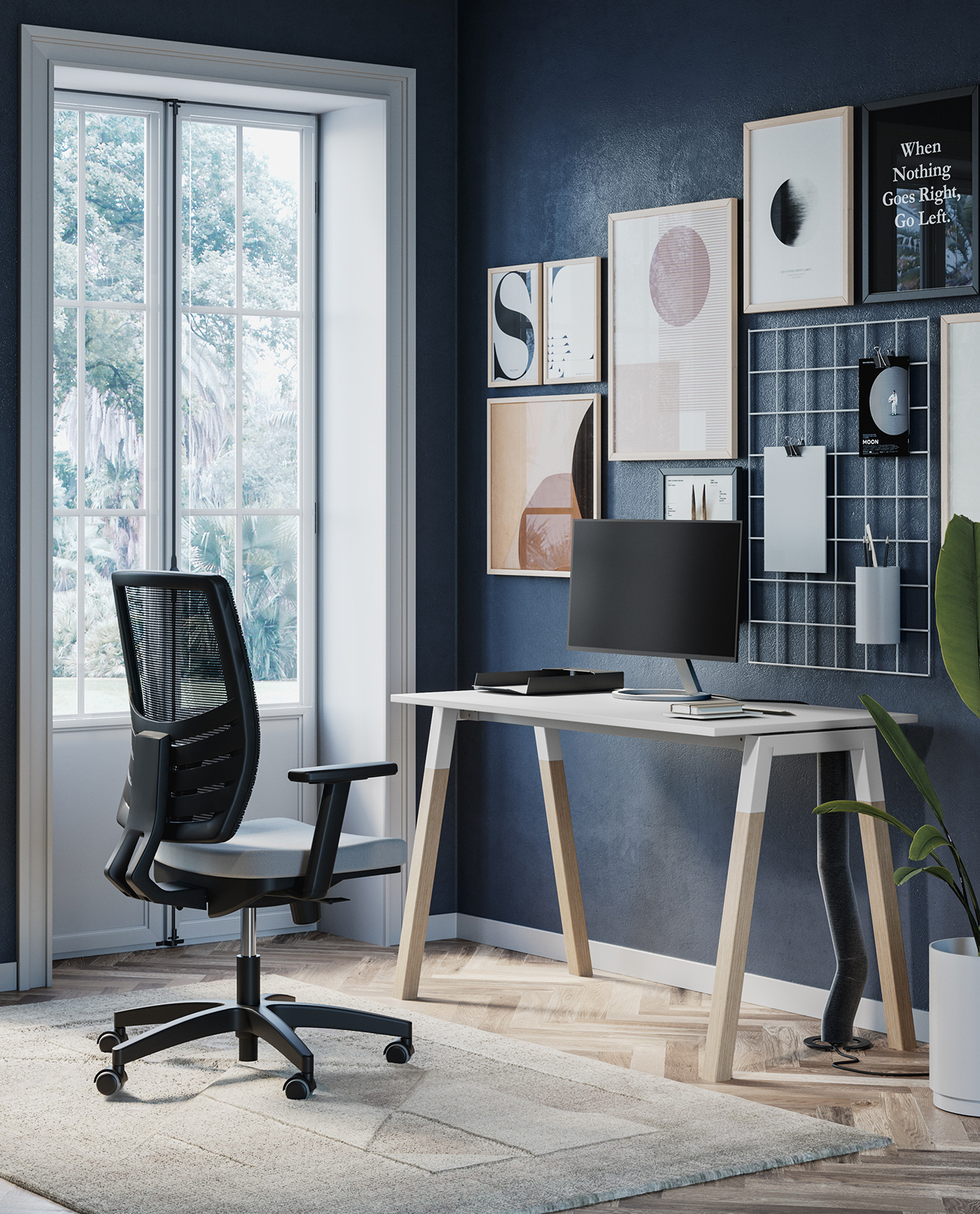We often see pictures of people working with laptops while lying on a sofa or sipping coffee on an armchair. What a mistake! There are a few basic rules that must be adopted before sitting in front of a screen for several hours.
Work, in order to be efficient, requires the use of an ergonomic seating solution, which mustn’t force people to sit incorrectly and potentially increase their stress level, regardless of whether they are working in the office or from home.
There are many arguments to support this topic. Which ones? Let’s find out five of them, plus a sixth one that includes them all.
1. Supports a correct posture
Ergonomic seats are designed to put users at ease, reduce back strain and correctly support the spine. They also prevent incorrect posture: bending too far forward over the desk, sitting uncomfortably and dangling with your head are negative attitudes health wise, but also unattractive traits in a working environment. For a correct posture, in addition to sitting properly, you need to have your chin in line with the center of the computer screen and your navel at worktop height.
2. Reduces back and shoulder pain and improves mood
Assuming a correct posture is not enough to avoid back problems. Excessive hip, pelvis and neck pressure can cause long-term pain, with negative consequences for the worker such as spine overloading and distortion of the normal physiological curve of the body. The company would be negatively affected by this too: pain can result in absenteeism and reduced productivity of the employee. Discomfort can lead to discontent, let alone over time! Using an ergonomic seat also brings an advantage to the general office mood: feeling comfortable and at ease makes employees (more) cheerful!
3. Lets your arms rest
Even if typing on the computer is not considered one of the tiring tasks, it’s important to make sure that your arms rest during the day.
Try to form a 90 – 110° angle from the upper arm to the forearm. Elbows should rest comfortably on one side and shouldn’t stretch outwards to reach the armrest.
Incorrectly positioned armrests can cause shoulder and neck cramping, which, if pushed forward, can lead to incorrect posture.
4. It adapts to every need
The components of ergonomic seating are multiple and in some cases also determine the quality of the product. When choosing an office chair, look for ones with adjustable height, seat depth and armrests and a reclining backrest.
Customizing the adjustments allows you to create a seat “designed” around each individual’s needs, improving their daily activity.
Your chair is your throne – adjust it to fit your work needs alone.
This factor is important not only for the user but also for the company, which can easily insert the same type of product when designing offices.
5. Durable over time
Why choose a poor quality product, with the risk of having to replace it after a couple of years? Emmegi ergonomic chairs are produced and tested according to the highest quality standards: they will be a part of your office for many years, maintaining their efficiency in a lasting and constant way.
The end result: productivity and efficiency
In 1984, Shute and Starr demonstrated how seat adjustments reduced complaints about back pain; in 1990, Dainnoff and Smith documented a 17.5% increase in productivity in ergonomically furnished workers.
Further evidence came in 2002 with the study by Harrison and Robinetter, where they confirmed that productivity increased by 17.7% when ergonomically seated. (Source: ScienceDirect)

Recently the Washington State Department of Labor and Industries examined 4,000 people in the transition from “traditional” office furniture to ergonomic products. The result was evident: a reduction in absenteeism (often linked to back pain) and mistakes and an increase in time assigned to individual activities without distractions.
The importance of good ergonomic seating pretty clear. Now you just have to choose your one by following our tips !


